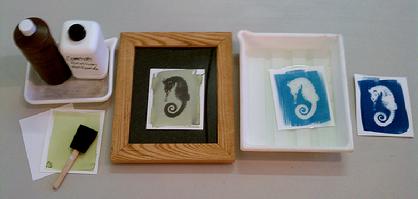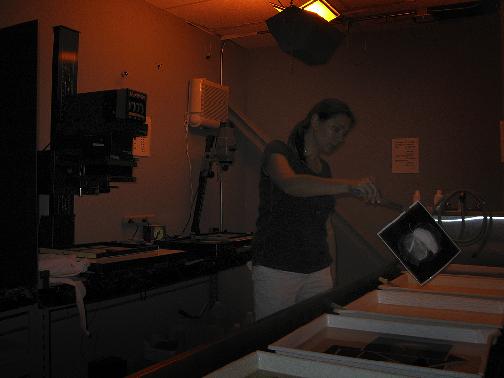Last Updated 03/04/13
The Process
|
 |
| CYANOTYPES |
|
|
|
Sir John Herschel invented the cyanotype process in 1842, rather early in the history of photography. While both albumen and silver gelatin prints rely on the light sensitivity of silver, cyanotypes are produced by light sensitive iron salts.
General Attributes:
The cyanotype is named for its rich blue-green hue, cyan. Cyanotype prints have no emulsion; the light-sensitive iron salts have been infused into the paper fibers, unlike either albumen or gelatin silver prints. Cyanotypes were far simpler and less expensive to produce, which made them a favorite method for turn-of-the-century amateurs who wanted to make proofs of their negatives. The architectural blueprint is a variation of this photographic process.
Technical Definition:
A piece of paper is first sensitized with a solution of ferric ammonium citrate (an iron salt) and potassium ferricyanide (a crystalline iron salt) and dried. The prepared paper is then contact printed, or placed in direct contact with the negative, and exposed to sunlight until an image begins to appear on the paper (usually about fifteen minutes). As contact prints, they are always the same size as their negatives. In the final step, the print is washed in water to oxidize the iron salts and draw out the cyanotype’s brilliant blue color.
|
 |
| Christine Experimenting in the B/W darkroom |
|
|
|